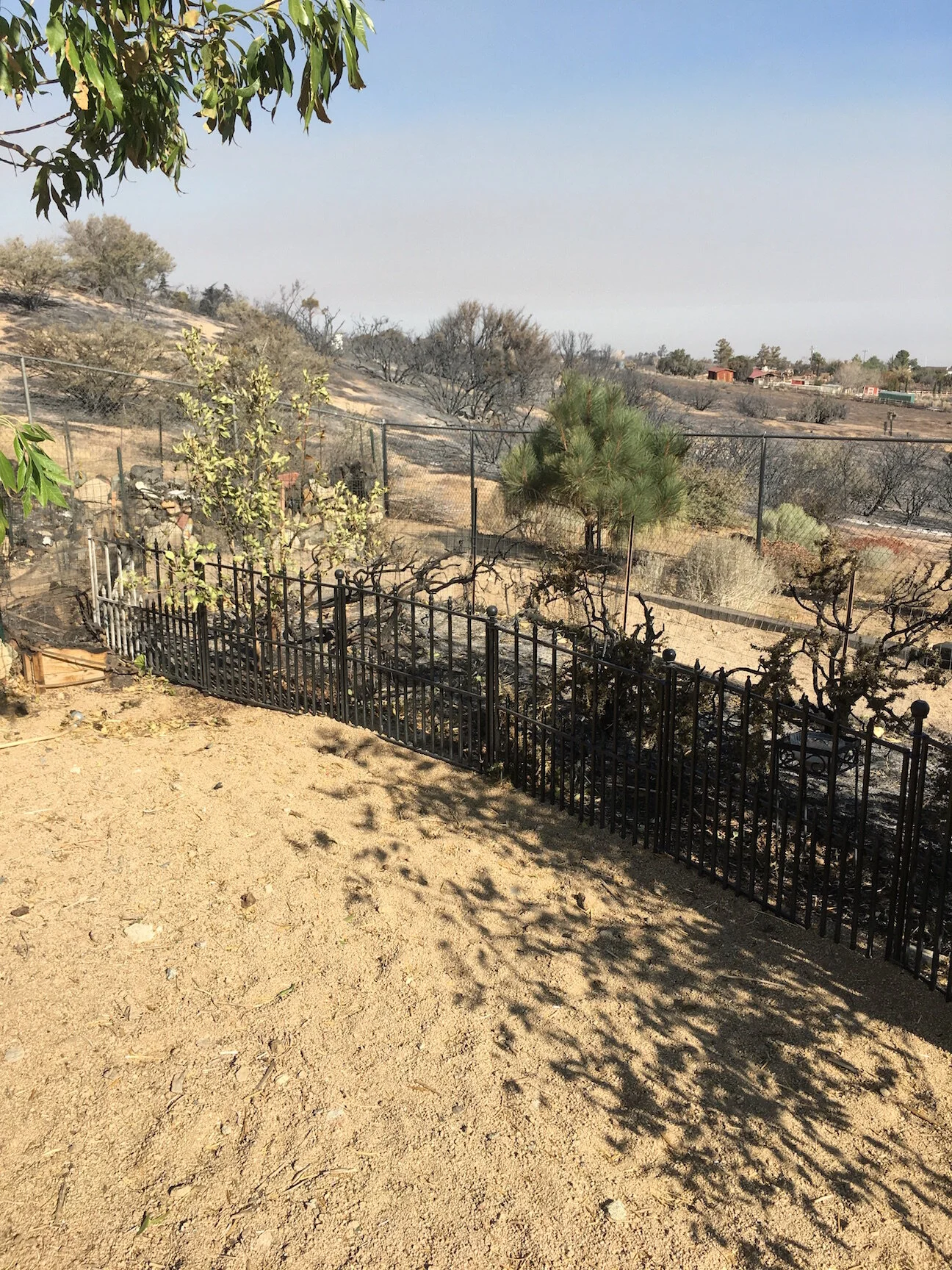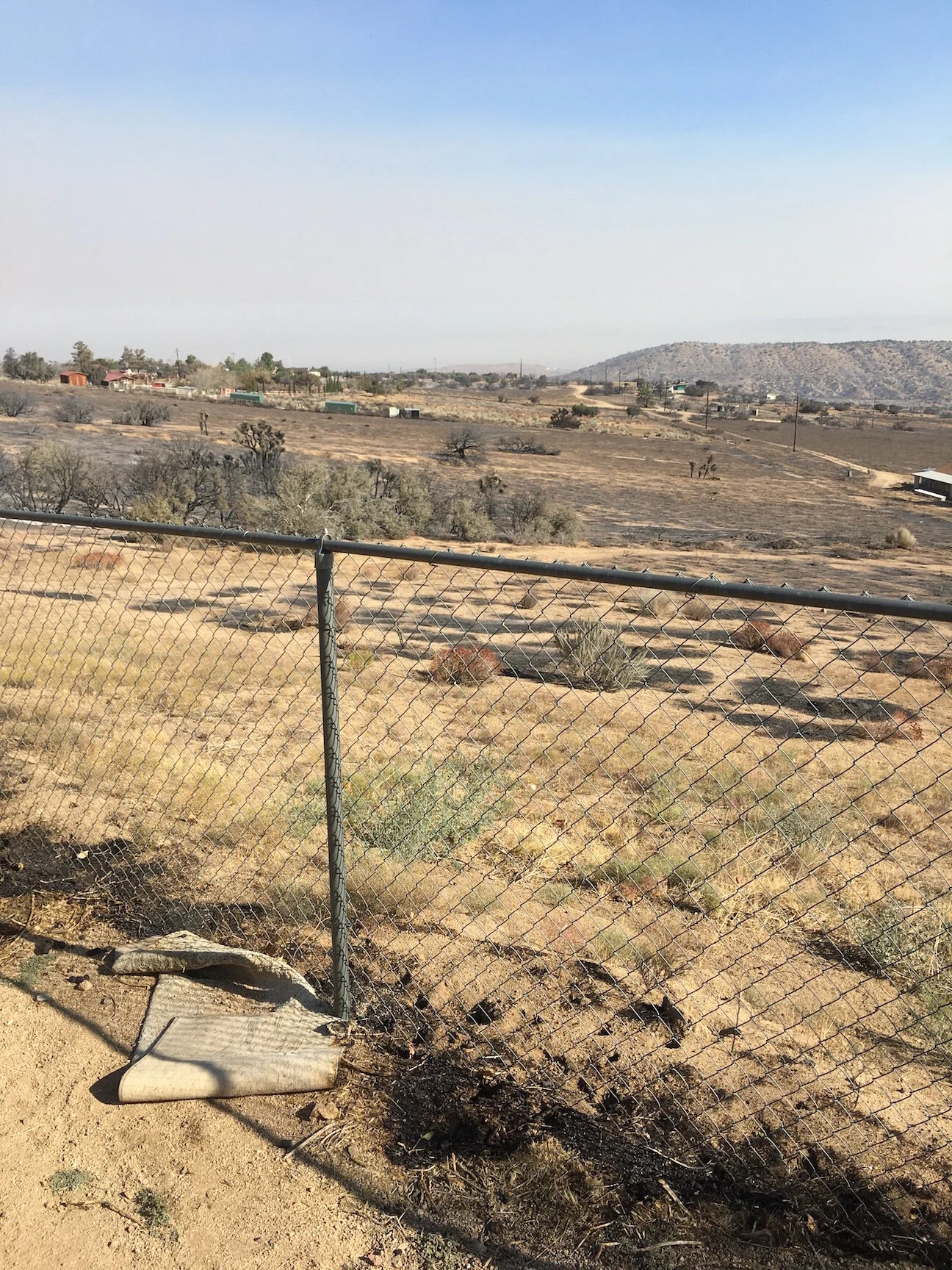Greywater in a Fire Zone
Working with the owners to restore their greywater system after the Bobcat Fire gave us a glimpse of what it’s like to go through a major wildfire.
Back in May of 2019 we installed a pumped greywater system at a house in Juniper Hills, about 60 miles north of Los Angeles on the desert side of the San Gabriel Mountains. It was a memorable location with critters galore, including a native frog pond and a tortoise who’s graced our IG in the past.
We set up a surge tank with a small ½ hp pump to distribute greywater from 2 bathtubs, a shower and a washing machine to 12 mulch basins divided into two zones. The system feeds trees along the driveway and property line, away from the house.
Original installation, May 2019. Note the mulch basins along the rocks.
Over the next year we kept in touch with the homeowners, going back in July of 2020 for a routine maintenance. When the Bobcat Fire flared up in September and proceeded to burn 115,000 acres, we couldn’t help but think of our clients, their tortoise and the little froggies. Hopefully they were all ok.
Then this email came through:
Hi Guys!
Soooo... we had to evacuate (literally flee) from the Bobcat Fire and the firestorm came through!!! The house was saved just barely but... see attached... We were able to access and many of our trees along the fenceline with the system have burned, it's just a shock.
The owners and their animals got away unscathed, but the pictures of the area were devastating. The diverse landscape around their house was charred black, and most of the mulch basins we had installed were completely burned out.
The fire reached past the fence line.
Burned out mulch basins.
Defensible Space
They followed up with more details on the situation:
I have gardens all around my home, but this was a full firestorm that created its own weather. I'm attaching more photos so you can see the size and width of how this fire came in down the hill on 2 sides. If we didn't have a large defensible space around the perimeter for them to get around it and stop the fire, the house would have gone up fast! So when we get home, I will be pulling all combustible wood and straw mulch that's near the house.
This last point is key. Although greywater irrigation can help build fire resilience by keeping landscape green and hydrated, plants grown on greywater and mulch used to fill the irrigation basins are flammable when they dry out. They were not, and should never, be placed near structures in fire hazard areas.
All in all it could have been much worse, and soon there were signs of hope:
Trying not to be heartbroken, a great deal of my work gone. My goofy DIY gabion rock walls burned and got through it! We went back yesterday and glad to see a frog jump back inside my ash covered pond! It will be a new journey of desert permaculture for me, a big lesson learned on how to work through this in the hot, dry area that we have where the 'possibility' of fire is a 'probability'.
Our entire back property went up right to the fence, and many of the trees for the system burned, but after a couple hours with an ecologist, I think this Spring many will begin to show some regrowth. In some places, it was like a kiln, my two compost-pallet boxes were reduced to nothing but a bit of ash on the ground.
Indeed, the following Spring did bring green shoots of hope. We received another email:
It's been fascinating to see what is coming back, and what is not at this point. All the trees along the line seem to be coming back in one form or another and will need the water!
Some of the irrigation components of the system and all of the mulch had been destroyed in the fire, so we drove up and over the San Gabriels to rebuild them.
Checking the lines and replacing burnt parts.
We dug up most of the system to see the extent of the damage. Many of the valve boxes and irrigation stub outs had burned. We replaced everything and checked that it was all working properly.
Valve box in mulch basin.
Valve box before and after burning.
With the irrigation fixed and the mulch basins restored, the system was up and running again, ready to feed the rebirth of this Southern California desert oasis.












